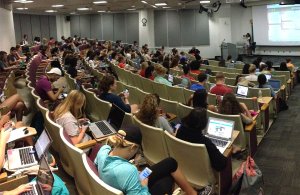by Julie Dodd
As instructors, we’re often so focused on the content of the lesson that we don’t think about the importance of structuring effective transitions between different segments of the class.

Having students work in pairs or small groups promotes active learning. But it’s important to plan your transition between activities to make good use of class time.
A reader of my blog who is a math teacher noted that lack of smooth transitions can lead to losing class time or even losing students’ attention for the rest of the class.
That comment motivated me to share some tips about structuring transitions between classroom activities.

